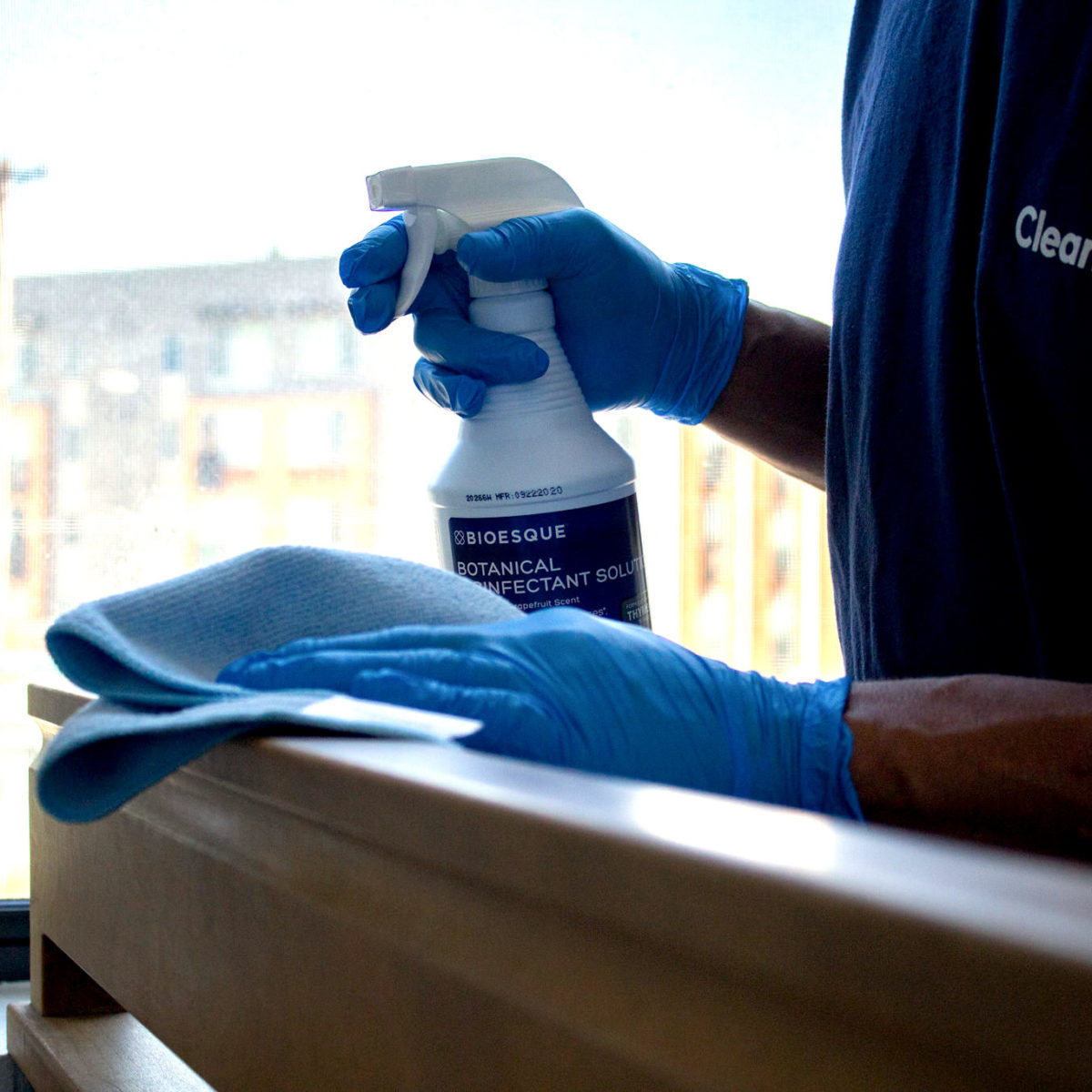A new year brings new changes and new plans. Do your plans include a remodel or expansion of your existing space? If so, now is the perfect time to think about your future cleaning needs. A pro tip: selecting easy-to-clean surfaces can have a major impact on the health of your space, and your budget.
Keeping your environment healthy and free of harmful microbes is an ongoing challenge, but there are ways to make it easier and more efficient. The surfaces you choose and the way you design your new space can have an impact on your long-term cleaning and maintenance costs—not to mention the health of the people who use it.
When planning a new interior design, one of the biggest mistakes you can make is to overlook ease of cleaning. When an environment is difficult to clean, surfaces are more likely to harbor germs. They also degrade more quickly and cost more to clean. By factoring cleaning needs into your design decisions from the beginning, however, you can make better decisions about where and how you spend your money while choosing building elements that will last longer and stand up better to regular cleaning.
Easy-to-clean surfaces are a balance of microbe resistance and durability
One of the biggest lessons COVID taught us is that keeping high-touch surfaces free of harmful bacteria and viruses is a top priority in any environment. Desks, chairs, countertops, fixtures and other surfaces are all places where microbes can thrive without proper cleaning.
When choosing materials for your furnishings and other surfaces, there are two things to keep in mind:
- How long can microbes survive on the surface?
- How well does the surface hold up when subjected to repeated disinfecting?
Ideally, you’ll want to choose surfaces that both discourage microbial growth and are durable enough to endure regular application of cleaning products. But you may find yourself having to make some tough choices.
For example, plastic, resin and laminate are frequently recommended materials for office chairs and tabletops because they’re easy-to-clean surfaces and can handle most EPA-approved disinfectants. Stainless steel is a popular countertop and appliance choice for similar reasons. But what many people don’t realize is that bacteria live longer on plastic and stainless steel than any other material. So, while these surfaces may be easier to clean, they can also harbor more germs between cleanings.
Natural materials such as wood, on the other hand, may require a bit more care, can be damaged by harsh cleaners and may not last as long as plastic or steel. On the plus side, certain woods such as oak have natural antibacterial properties that make them more hygienic than other materials. Furthermore, many manufacturers offer wood finishes with additional antimicrobial protection. Similarly, copper and its alloys (brass, bronze, cupronickel and copper-nickel-zinc) also have intrinsic properties that destroy microorganisms. However, these metals tend to tarnish over time and may require special care when cleaning.
So which materials are best for you? That depends on your day-to-day needs as well as your long-term cleaning plan. The important thing is that you consider these factors and weigh the options to make the best possible decision for your space.
Easy-to-clean surfaces include upholstery
Just like the rest of the surfaces in your space, upholstered furnishings need regular cleaning. Dirty upholstery can harbor thousands of bacteria, viruses and allergens, so keep cleaning considerations in mind when selecting fabrics.
Which upholstery fabrics are easy-to-clean surfaces?
- Leather is a durable choice and easy to wipe down with a disinfectant—provided you use cleaners that won’t degrade the material. Choose darker colors to prevent the accumulation of stains.
- Microfiber is a synthetic fabric designed for low maintenance and longevity. It’s also affordable and relatively easy to clean.
- Vinyl is durable and easy to clean, and it can also be made to mimic other fabrics and textures so you can achieve the look you want without the hassle of additional cleaning concerns.
Make your space cleaner-friendly
As you ponder which easy-to-clean surface materials will work best for you, take a moment to consider how the arrangement of these surfaces can also affect your cleaning regimen. Here are a couple of things to keep in mind:
Consider going mobile. The more mobile your furnishings are, the easier it will be for your cleaning crew to access those hard-to-reach areas. Putting furniture on casters, for example, makes it easier to move out of the way, enabling your cleaning service to work faster and potentially saving you money in the long run.
Stash it in storage. The more storage you have available in your space, the fewer things you’ll have lying about that need to be cleaned or moved to reach the surfaces beneath. Integrating ample storage throughout your interior design can help keep the area cleaner and more efficient.
Need help deciding which easy-to-clean surfaces are right for your space?
A new remodel deserves a professional cleaning touch from the get-go. Even if you’re still in the early stages of planning your interior design, it’s never too soon to consult our experts about your materials and to develop a professional cleaning plan. We can answer all your questions and help you make the best decisions for your future cleaning needs. Schedule a consultation today!



Permalink